26Views 0Comments

Real Costs, Smart Savings & Easy Itineraries –
If you’re wondering how to plan a trip to Iceland on a budget, then you’re in the right place. Not only have I done it before, but I’m also midway through researching how to do it for the third time – this time learning from previous mistakes.
The first time I tried to do Iceland on the cheap, I settled on a December visit to save heavily on accommodation costs, which skyrocket in summer. Witnessing the unique, community-powered celebrations of New Year’s Eve in Iceland was cool. Still, I quickly realised that travelling in winter, when there’s only around four to five hours of sunlight, meant needing to plan a more extended trip to experience everything in daylight, cancelling out most of the savings.
My second attempt to travel Iceland on a budget was a two-day autumn stopover. But between flight delays, missed reservations, and poor planning, it ultimately proved to be poor value for money. So, now with a little data crunching, realistic pricing for 2026, and an optimised itinerary, I’m hoping to finally master Iceland budget travel next year – here’s everything you need to consider to do the same.
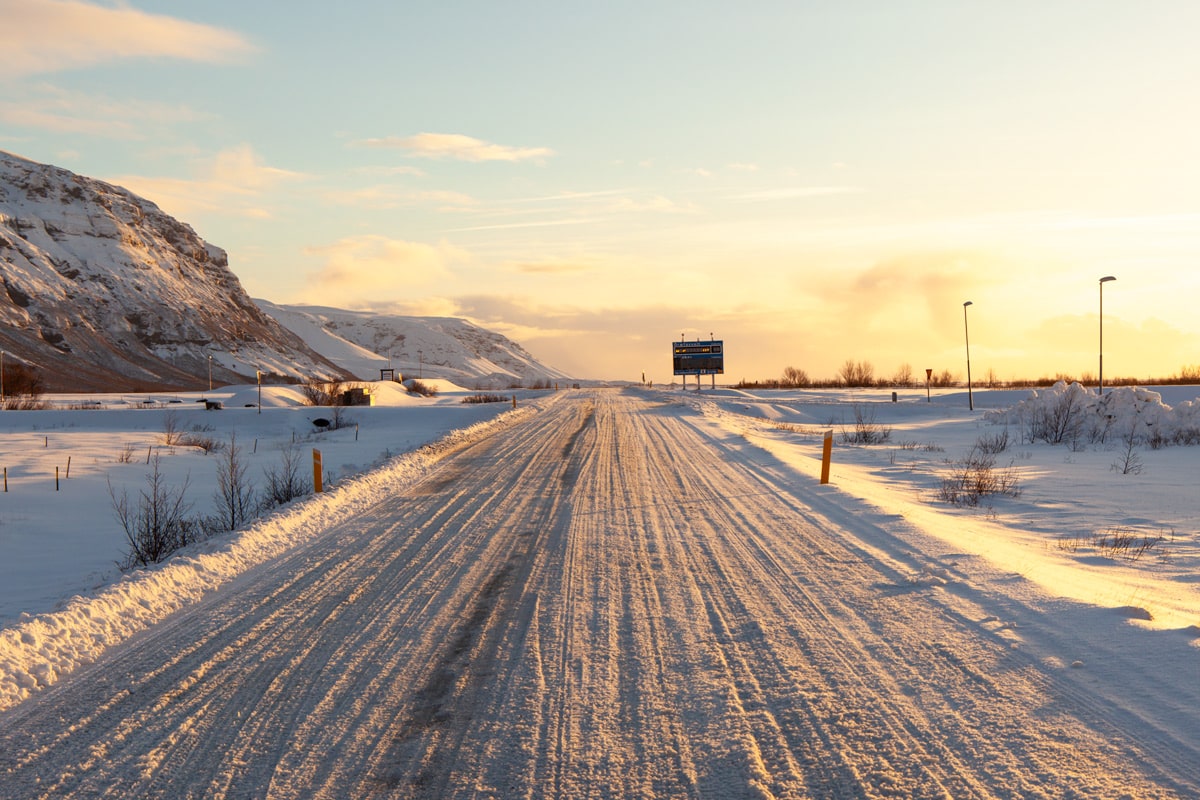
What does a budget trip to Iceland roughly cost in 2025?
The following is a rough estimate, per person (based on two sharing), of what you can expect to spend during a five-day, off-season (for this example, I’ve used May) budget trip to Iceland booked at least eight months ahead. Of course, seasonality and your driving distances (fuel costs aren’t cheap) will make a difference.
- Shoestring $400/£300 pp/5 days: Camping every night in your own tent in Reykjavik; preparing meals from Bónus Supermarket; one guided tour to the Golden Triangle and one glacier trek.
- Frugal $675/£500 pp/5 days: Simple guest house double room in Reykjavik (cheaper than hostels at the time of research due to early-booking discount) and elsewhere; preparing meals from Bónus Supermarket and some hot food from gas stations; a five-day Toyota rental from Reykjavik Cars and 1.5 tanks of fuel; one experience such as the Blue Lagoon or a glacier trek.
- Comfortable $880/£650 pp/5 days: Staying in private hostel or guest house rooms; preparing most meals from Bónus Supermarket but with one affordable meal out per day; car hire as above and 1.5 tanks of fuel; two experiences, such as the Blue Lagoon or a glacier trek.
No matter your budget, there are three unavoidable expenses: getting to Iceland, getting around Iceland, and accommodation. Sure, there are ways to shave food costs and by picking free activities on the ground, but these three elements will eat the largest hole in your wallet. Here’s what to consider to manage your trip to Iceland costs.
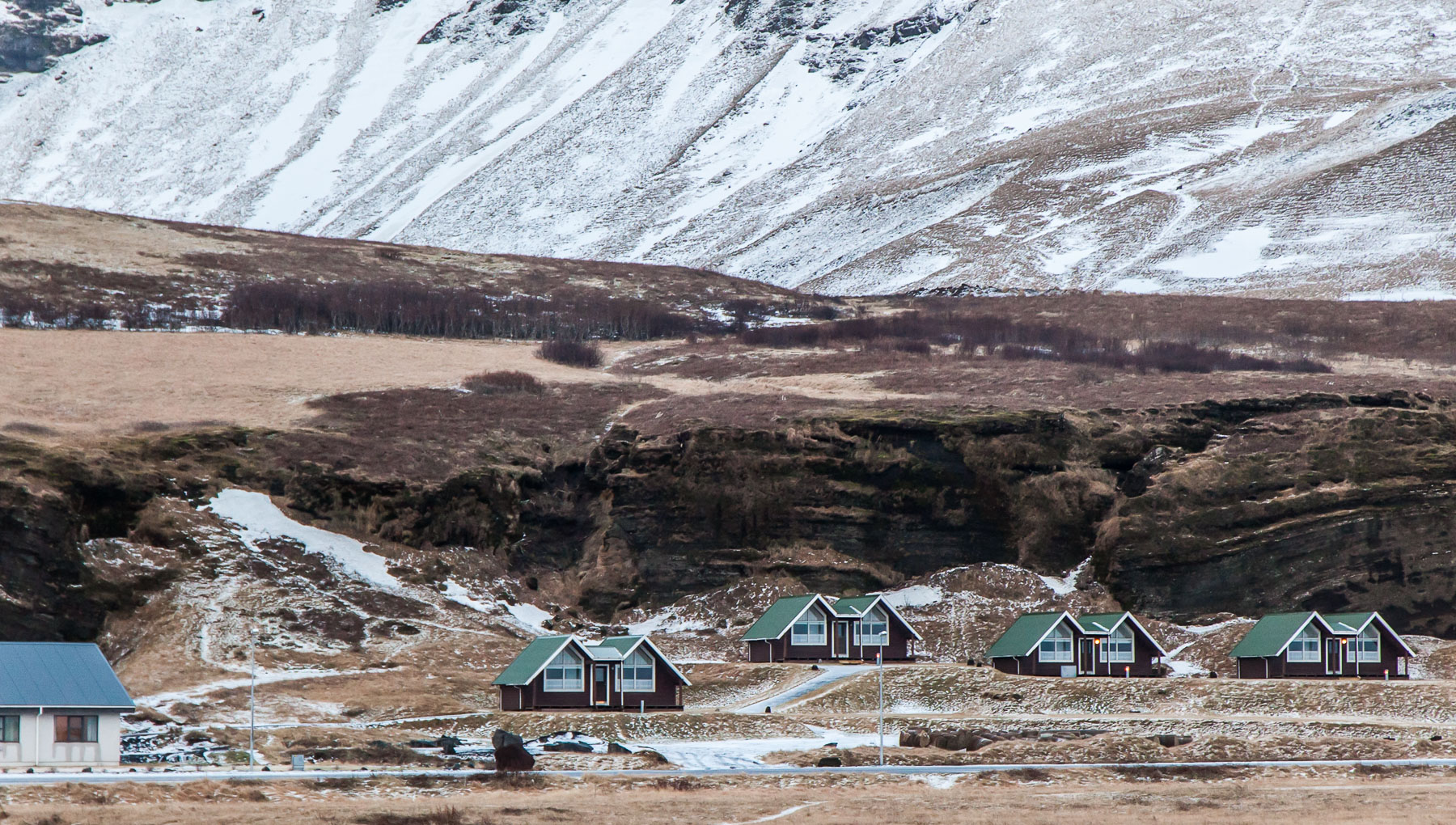
Plan a cheap trip to Iceland by picking the right season and route
The key to travelling in Iceland on a budget is choosing the right time to visit, which might not always align with the best time to visit Iceland, depending on your interests. The depths of winter, as already mentioned, can be a false economy due to very limited daylight, while summer – when the sun rarely sets – means the highest prices. As such, the shoulder season, when it’s warm enough to camp and more accommodation options are open, is the best pick for trying to do Iceland on the cheap – but when is that?
The best way to work it out is to do some statistical digging. Unlike some outdated pre-COVID advice, statistics don’t lie. Plus, these figures are those that accommodation, car rental companies, and the like probably use to work out pricing schedules for the year ahead. Iceland makes its occupancy rates (the number of rooms used in any period) freely available on its statistics sites – the figures for 2024, for example, can be found here.
Of course, this date shows in January that only around half the rooms (44.9%) are occupied, though many are closed, peaking at 86.1% in summer. Meanwhile, in spring, occupancy rates for April (51.2%) and May (58.9%) were pretty low, while autumn was a bit higher; October was 77.3% and November 62.2%. As such, it’s safe to conclude that while perhaps not the optimal time for a visit weather-wise, May might be the best month to plan a budget trip to Iceland. The data further breaks down booking levels by region, meaning if you have a car, you can make assumptions on which areas to road trip for better pricing. Sure, camping is always going to be the cheapest option, but for shoulder-season travel, it will be more comfortable to stay in a simple guesthouse.
Once you’ve compared this date with what you’d like to do, and made a little research into car hire and accommodation costs, then it’s time to start looking for flight deals within that window. Yes, Iceland is one of those places I strongly recommend planning almost in reverse and always as far ahead as possible – make reservations a year out and you’ll nearly always make significant savings.
If you’re travelling from Europe, budget airlines such as easyJet usually have the best prices. However, if you’re travelling transatlantic, it might save money in the long run to plan two European trips for the cost of one by using either Icelandair’s stopover or Play’s stayover options, where you can essentially break up the trip with a “free” stop of even a week or ten days within your ticket price.
The last pre-planning tip is to consider which route you’ll be driving, as fuel costs can be significant, and shorter jaunts will maximise time and budget – more on that below – and how many will be in your group. Sharing fuel and car costs between four will always be more economical.
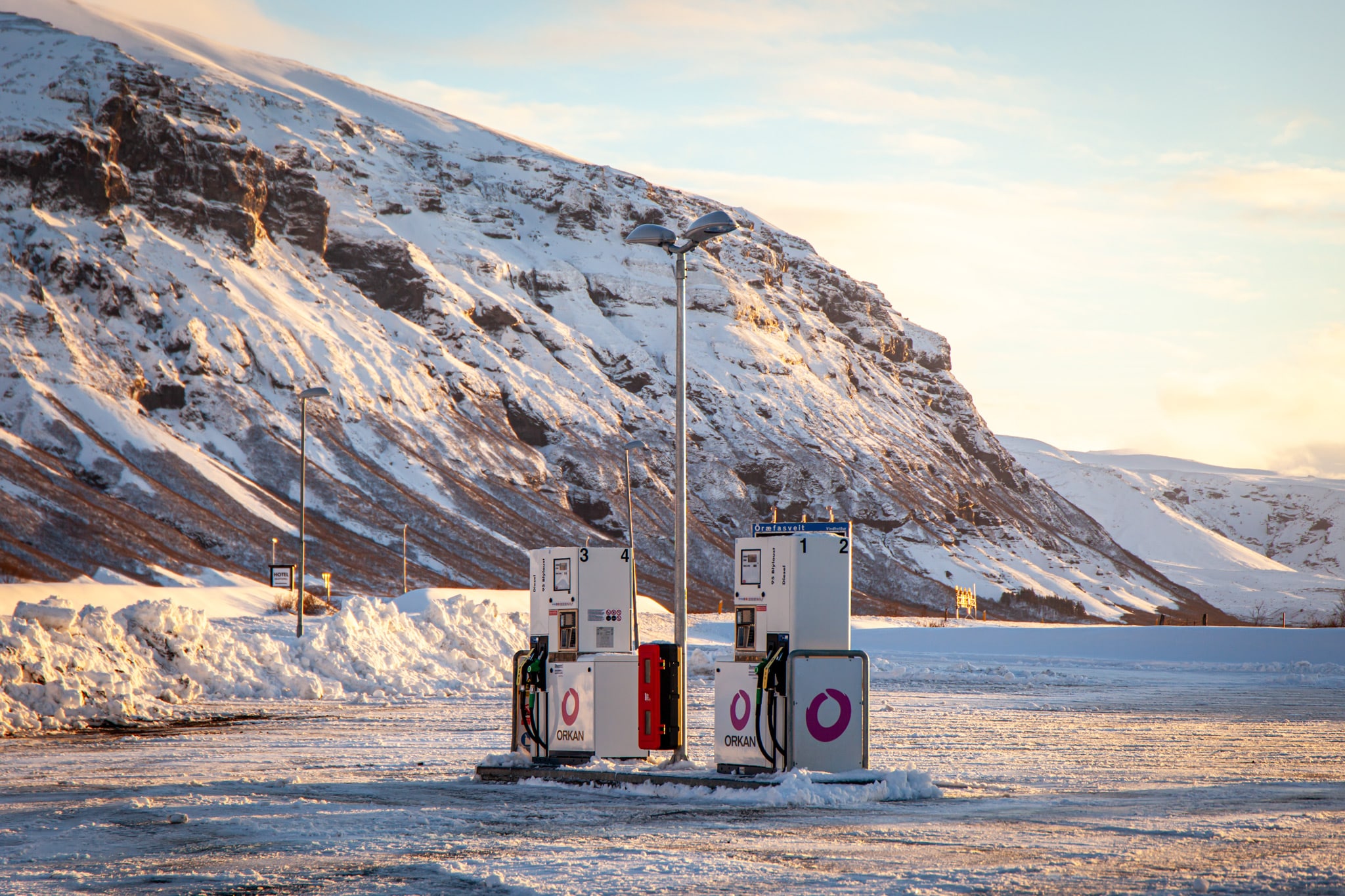
How to get around Iceland on a budget
Surprisingly, the best way to get around Iceland on the cheap is to plan a road trip. This is especially true if you’re two or more people able to share costs. There is public transport in Iceland, but it’s far from cheap. Take, for example, the journey from Reykjavík to Vik’s black sand beaches. A quick search on the Strætó bus website shows it takes around an hour longer than driving (with a couple of changes) and costs 9,070 ISK (roughly $74/£55) per person. If you’re able to score a car for a decent price, even once you’ve added in fuel costs, when split between two, it can be cheaper. Trust me, I learnt this from firsthand experience.
Tours or self-guided?
For the most part, this means – unless you’re slow travelling – you’ll likely want to rely on tours and excursions or renting a vehicle and exploring self-guided. On my first visit to Iceland, the two of us based ourselves in Reykjavík and relied on tours and excursions, which ended up swelling our budget nearly three times higher than we planned. Of course, there are times when joining a group activity absolutely makes sense, and even with a car, you’ll likely still pay these expenses. Experiences such as glacier treks, snorkeling in Silfra or entering ice caves will require a guide and additional costs.
However, by opting for tours only, we also ended up spending money visiting The Golden Triangle, various beaches and waterfalls, and heading out of the city to try and spot the northern lights. These were all tour expenses we could have avoided had we had a car.
Car or campervan?
Therefore, renting a vehicle well in advance to score the best deal makes sense. But what should you rent? Again, this will come down to when you’re visiting and what you want to do.
Renting a campervan in Iceland can appear wallet-friendly; you’ve got your vehicle and accommodation in one. However, the most affordable options are essentially vans with a bed, and a proper, fully-enclosed motorhome will cost far more. Even then, you’re only allowed to park at designated spots, and if you want facilities such as bathrooms and kitchens, you’ll be paying similar fees every night as those who are driving a much cheaper car and using a tent. Do the math depending on the time of year and then decide.
Likewise, many people will suggest that a 4WD is mandatory to explore Iceland. However, this isn’t really the case for many travellers. If you’re planning to do the hinterland F-Roads, which are open in summer and cross rivers and streams, indeed, you’ll need a much more expensive 4WD. But for most road trips, a small car – the more fuel efficient, the better – will more than do the job, saving you money. Plus, if you’re avoiding the most expensive summer months, the F-Roads will likely already be closed when you arrive. It’s also much easier to split car costs, as many. affordable campers only accommodate two people, whereas with four in a car, Iceland becomes cheaper.
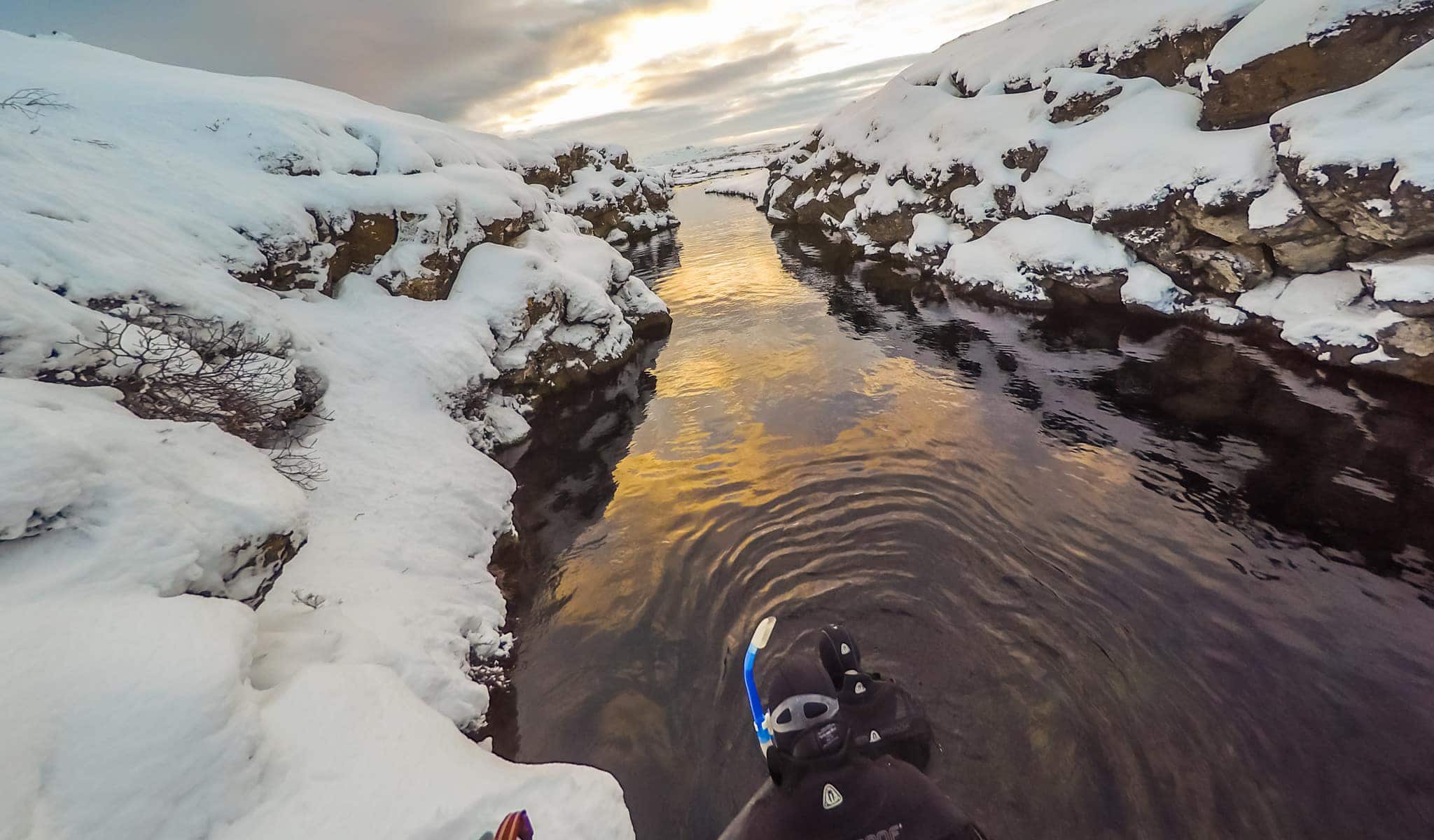
Tips for saving money on an Iceland road trip
While the roads in Iceland are generally good, a gravel chip on a windscreen or inadvertent damage could end up costing a small fortune. Ensure you have decent and full insurance, whether from the car rental company or through a policy you already have in place.
Try to avoid huge detours and plan your route to be as fuel-efficient as possible to reduce the need to fill up. When you do fill up the tank, choose a self-service gas station like Orkan or Ób, as fuel is usually cheaper due to the lack of employees. Be sure to travel with a chip-and-pin-enabled card to do so. If you have a Costco membership card, it’s also worth bringing. There is one Costco near Reykjavík and it’s often the most affordable place to fill up.
Pre-book and pick the right affordable accommodation
As with car hire, the key to Iceland budget travel is to book accommodation as far in advance as possible, especially if planning to stay overnight outside of Reykjavík. Seriously, booking a year or more out can lead to serious savings. Firstly, the prices might not have been inflated yet, so you’ll be scoring the same prices as this year. Secondly, and perhaps most importantly, there isn’t an abundance of hostels, cheap guest houses, or huge budget hotels in Iceland, so once those rooms are quickly gone, supply and demand will mean you’re paying a hefty price.
Sure, you could try to score a last-minute deal, but this is highly risky. It’s better to book well ahead, ideally with a free cancellation option (and your travel insurance already in place) and then rejig bookings closer to the time if plans change slightly or you find another option.
Camping is almost always the cheapest way to travel in Iceland, but keep in mind that wild camping is illegal, so it’s never going to be free. Given the much higher costs of a campervan rental, the best option is usually to bring all your camping gear from home (suited to the season) and pitch a tent – especially as even if you’re staying at a camping site in a campervan, you’d still need to pay the facility fee anyway. Many camp sites in Iceland have kitchens included, so you can easily prepare hot food from the supermarket (see below) to further save costs.
For longer trips, it might be worth considering the Icelandic Campingcard. However, this depends on your route (check coverage), travel dates (most campsites involved only operate from May or June to September 15th) and flexibility. The card currently costs €179 (around $210/£155) and covers two people in one tent (and up to four children, in the same tent). For that price, you get 28 nights at any of the listed campsites. Still, the daily tourist tax of 400 ISK (around $3.30/£2.40), and potentially additional fees for showers, etc, might be charged in addition. The card also gives a slight fuel discount at ÓB gas stations.
The next best budget option is usually hostels. However, this isn’t always the case; sometimes simple double rooms in guesthouses can be cheaper than even dorms. Again, book as far in advance as possible, as these can quickly fill up – most are smaller, family-run style places. Guesthouses are an alternative, and usually more common away from the capital, and some include breakfast or even dinner, which can offset some of the increased cost. The ultimate goal, in my opinion, is to ensure that wherever you stay has a kitchen. Eating out is eye-wateringly expensive, and you don’t want to spend the whole time eating cold snacks.
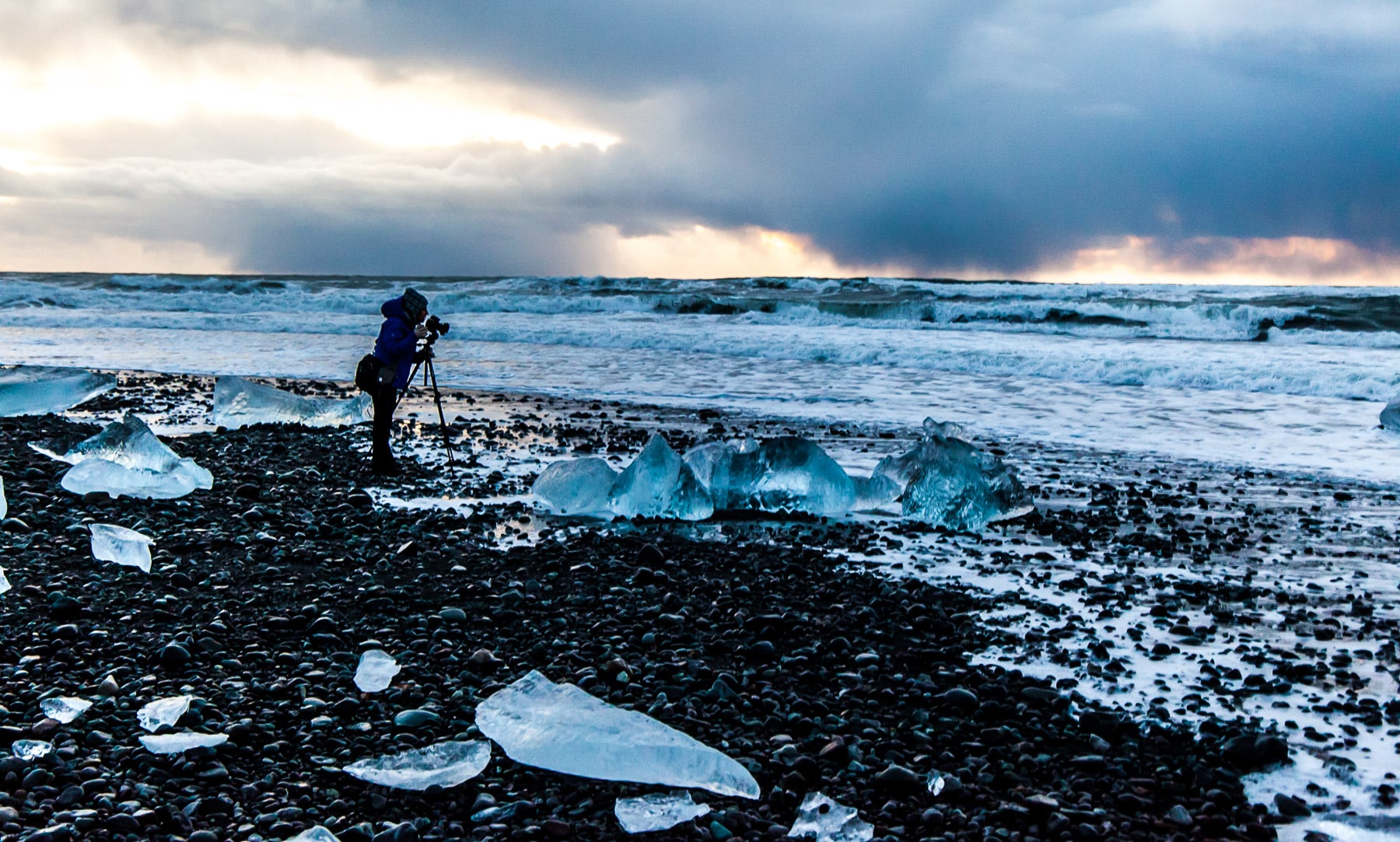
Ways to save money once you arrive in Iceland
Beyond the pre-trip expenses, eating and activities are going to be your two most significant obstacles to a cheap trip in Iceland. Luckily, with a little bit of pre-planning and researching alternative, less-known spots, it’s pretty easy to more than shave these costs in half.
Cut costs on food, no matter where you’re staying
Eating out in Iceland is going to eat quite a sizable hole in your budget. Consider that a takeaway burger meal from the likes of KFC can cost around $19/£14, and you start to get an idea of just how much dining in a restaurant daily will cost – though thankfully, tipping isn’t customary in Iceland.
Similarly, if you drink, a pint will set you back around $14/£10. These aren’t costs that can be split in the same way as a car hire can, so if you want a cheap trip to Iceland, you’ll need to get a handle on eating and drinking. For the latter, the most obvious is to stick to tap water. Iceland has some of the best quality tap water in the world, and it’s perfectly fine to request it when dining out. Refill your bottle whenever you can if you want some alcoholic drinks while you’re visiting, stock up at the duty-free shop for the best prices.
Food-wise, the cheapest solution is to bring dehydrated and camping meals from your home country, keeping in mind limits and foodstuffs can’t be brought into the country. Whether you’re camping or staying in hostels with kitchens, do a big shop at Bónus, the cheapest Icelandic supermarket, before hitting the road, and stick to this chain (or Krónan and Nettó) for the best prices. If you want the occasional fresh or hot food but without sitting down for a meal, pick up sweet or savoury treats from bakeries (some have discounts at the end of the day) or dine at the gas station.
While it might not sound delicious, in Nordic countries, you’ll find a pretty decent choice of food at these roadside stops. Hot dogs and soups are the go-to quick hot option, but it’s also possible to order a more filling meal, such as fish and chips, for far less than you’d pay in a restaurant. I often did the same in the Faroe Islands, where I found dining out equally pricey.
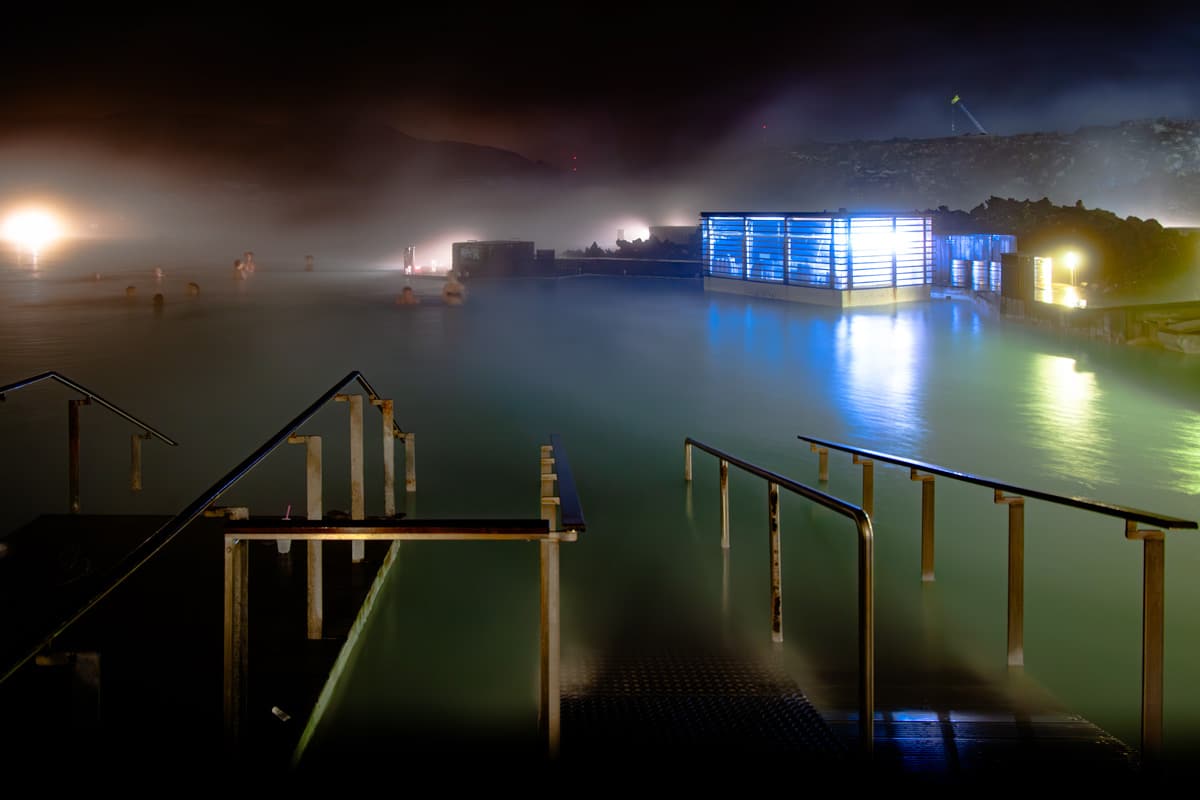
Plan an itinerary of low-cost and free activities, and swap out the most famous sights
Many of the best things to do in Iceland don’t cost a penny. Waterfalls, black-sand beaches, admiring the landscapes, and even witnessing Mother Nature’s most extraordinary performance, the northern lights, are free. Of course, there are certain activities and experiences you’ve likely got your heart set on, but there still might be ways to save money.
For example, are you thinking of scuba diving in Silfra, between two tectonic plates? Opt for a snorkelling experience instead and you’ll likely save around 30%. I did this – even as a qualified diver – and had no regrets; the visibility is excellent anyway.
Similarly, ditch the highly priced sights like the Blue Lagoon and head to either a slightly more affordable alternative, such as the Mývatn Nature Baths, or simply swim in the free or low-cost hot springs and geothermal pools around Iceland instead. Not only will this help you travel Iceland on a budget, but it’s arguably a more local experience and, having come all this way, why wouldn’t you want to swim surrounded by nature, rather than in a more built-up spa environment?
Start digging into all the experiences you want to have, and you’ll often find there’s a less famous, but equally excellent alternative that’s much less expensive.
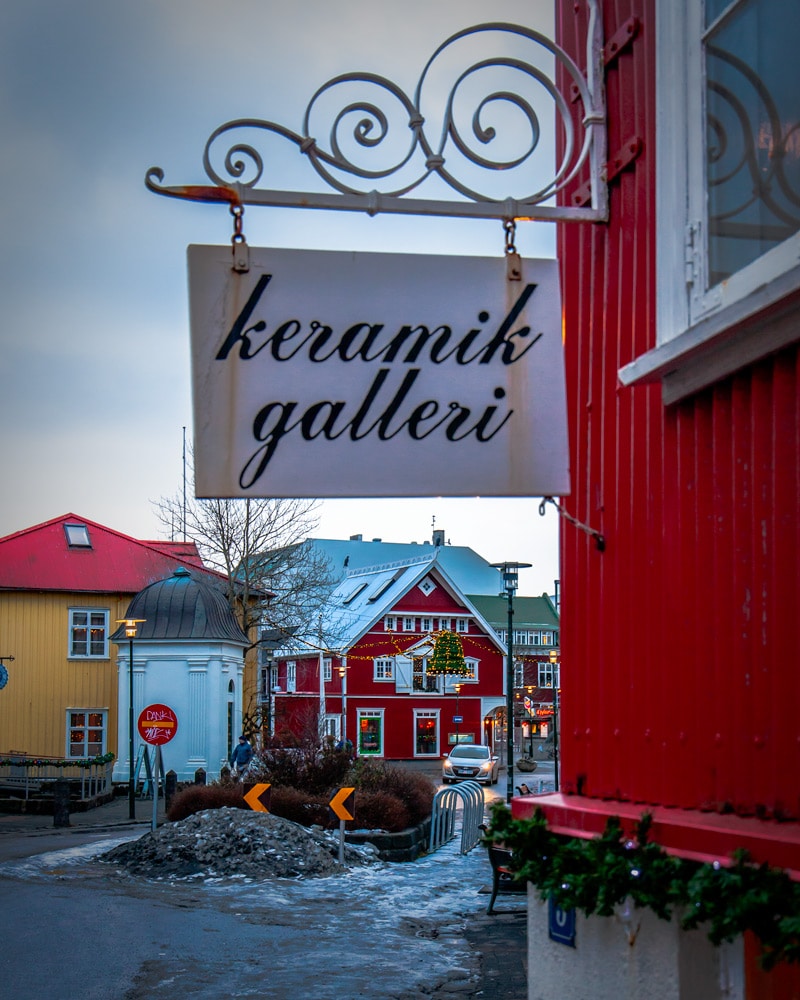
Sample itineraries for a cheap trip to Iceland
Fuel is far from cheap in Iceland, and while there are ways to mitigate it, doing a full-blown Island tour will always cost more than sticking to the south and west of the island. Consider precisely what you want to see, research if there are very similar alternatives closer, and plan your road trip route with both in mind. These three sample itineraries will also give you more time to experience and less time driving.
4 Days: Stick to the South Coast
On a short trip, consider basing yourself in Reykjavík. It might seem silly to double up on driving on day trips, but the costs can be offset by more affordable accommodation, as the capital has the broadest range of choice. You’ll still be able to tour the Golden Triangle and visit some breathtaking waterfalls, such as Seljalandsfoss, and the famous black sand beaches of Vík (you might want to do one night out of the city to break up this drive). Opt for a glacier visit to the closer Langjökull than Unesco-listed Vatnajökull; there are still ice caves and glacier hikes to be had.
7 Days: South and the Snæfellsnes Peninsula
It’s only two hours up the west coast to reach the Snæfellsnes Peninsula, known as “Iceland in Miniature”. Here you’ll see a volcano, lava field, basalt sea stacks, and waterfalls, and essentially a little bit of everything that makes Iceland so magical, but in quite a compact setting. It only takes around two hours to circumnavigate the peninsula, making it a fuel-efficient add-on to the sights of the south coast.
10 Days: Iceland’s Ring Road without breaking the bank
If you want to do the whole loop of Iceland’s Ring Road, consider opting for a summer visit and swallowing the extra costs of coming in the off-season. Driving is much easier during this time; you’ll have longer daylight hours to cover more ground, and the chance to tent camp will more than offset the higher prices of car rental and flights. Get a few mates together, bring your own camping gear, and it really doesn’t need to break the bank.
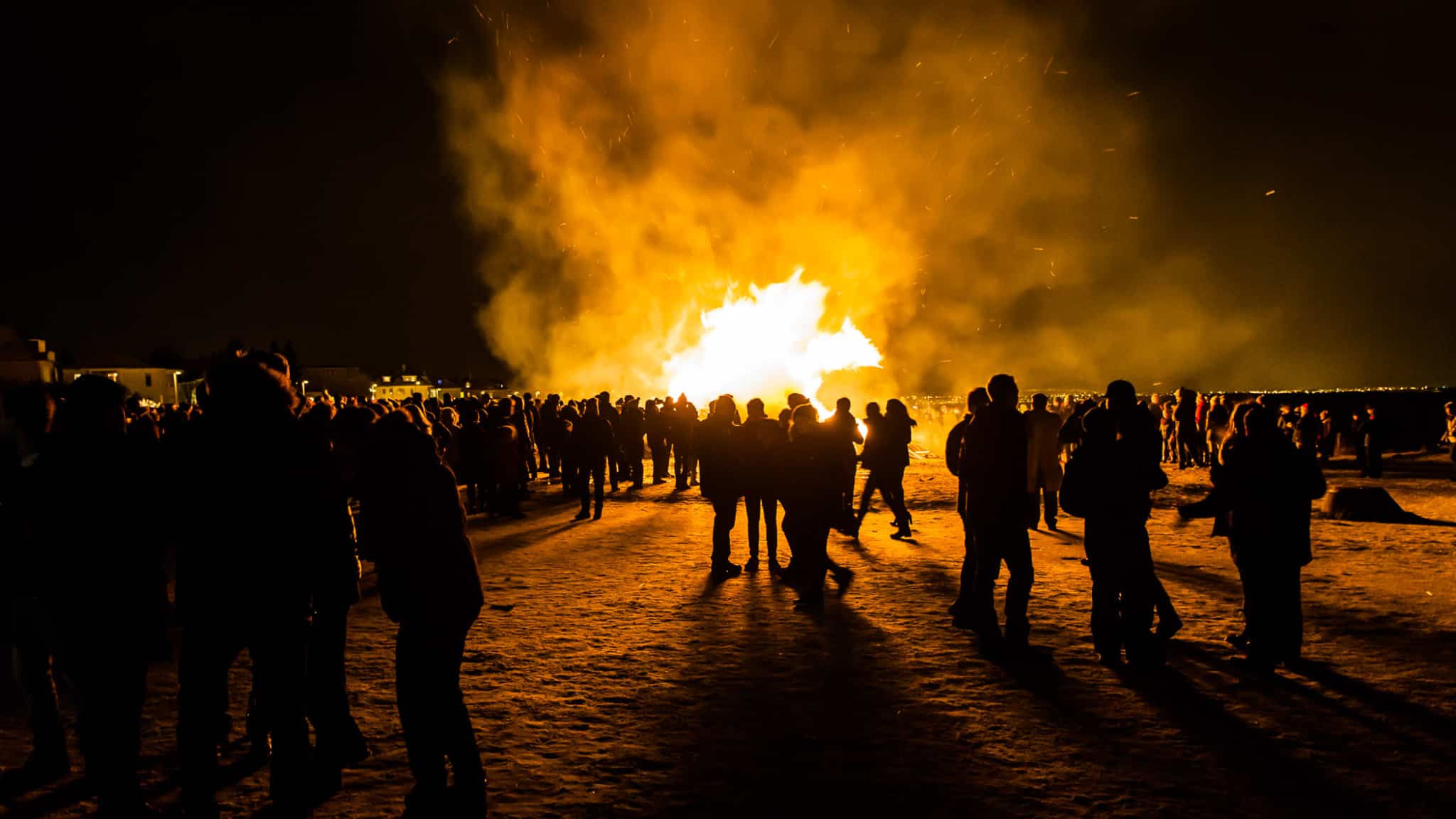
What to budget for a trip to Iceland?
The prices below are based on current research; the lower prices are for off-season travel, and the upper prices are for summer travel.
- Daily fee for a basic car hire: from 4,600 – 10,000 ISK (around $9.50–21 or £7–15 per person based on four people splitting costs)
- Daily entry-level campervan hire: from 9,500 – 14,400 ISK (around $40–60 or £30–45 per person based on two people splitting costs)
- Night in a hostel in Reykjavík 40,000 – 72,000 ISK per person
- Fuel costs around 320 ISK a litre, so based on the above itinerary and depending on model, you’ll likely be looking at a minimum of 28,000 ISK for a five-day trip – split it between three or four people, and you’ll save considerably on tour options.
- Meal for two 7,000+ ISK
- Lava Tunnel entry 8,400 ISK
- Glacier Trek 13,900 ISK
- Blue Lagoon entry 9,900 ISK
- Check for more recent and varied average costs here.
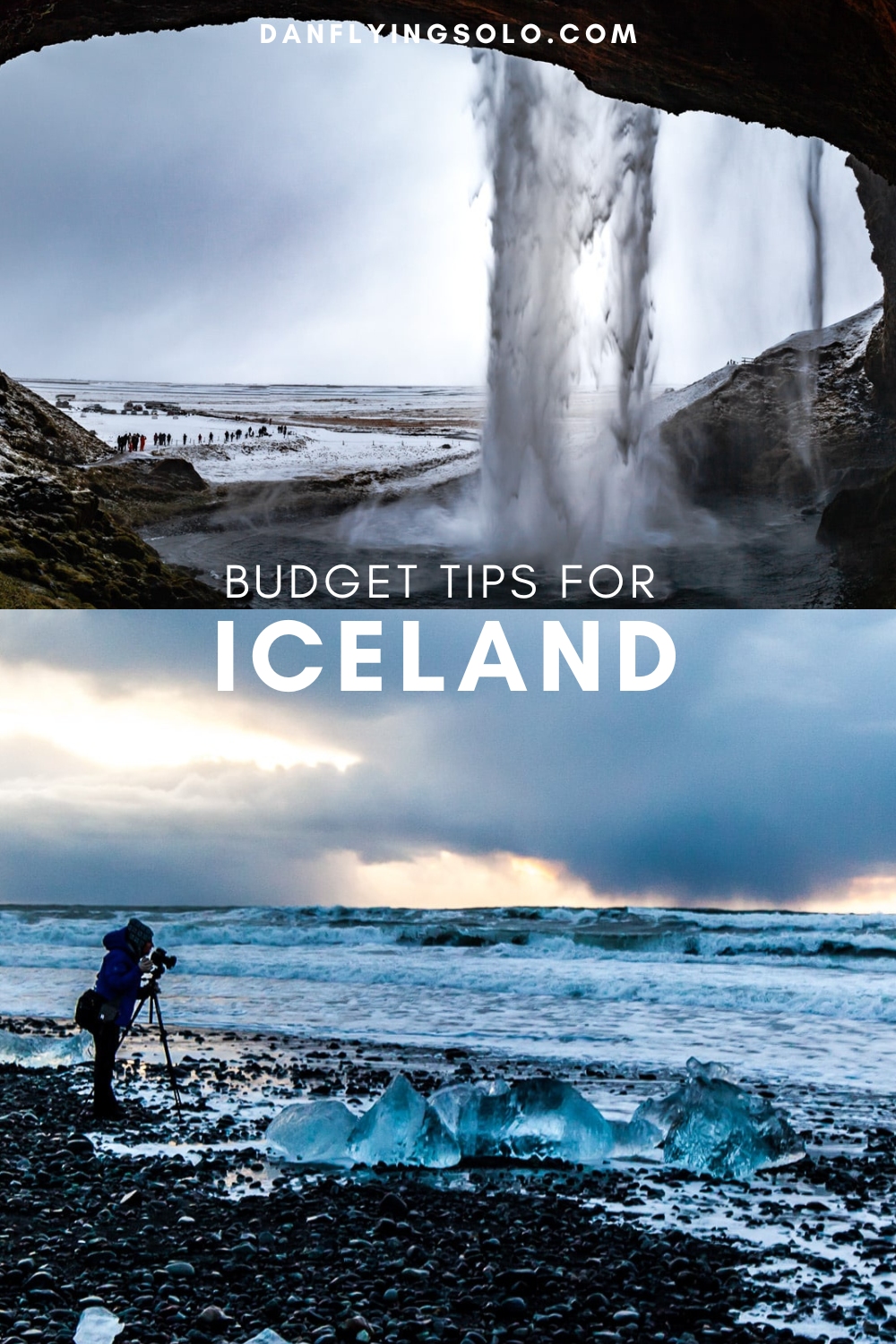
FAQs
How to save money on Iceland’s Blue Lagoon?
Iceland’s Blue Lagoon operates a dynamic pricing model, so securing tickets on a budget requires research. However, the best way to save money would be to skip this famous pool and opt for a more wallet-friendly alternative instead. The Mývatn Nature Baths are slightly cheaper. Still, picking one of Iceland’s free geothermal pools won’t cost you a penny.
Can you wild camp in Iceland?
Wild camping isn’t permitted in Iceland. While camping can be a good way to visit Iceland on the cheap, it’s mandatory to stick to official camping sites or secure permission from landowners in advance to pitch a tent elsewhere.
Does Iceland have public transport?
Public transport is one option for a cheap trip to Iceland. The island’s Strætó operates around 18 routes outside of Reykjavík. However, there are more services in summer when other costs are higher, connections can be clunky, and tickets aren’t particularly inexpensive. In summer, there are also additional routes to hiking trails.
When’s the best time to visit Iceland on a budget?
Winter might appear to be the best time to travel to Iceland on a budget due to the lower costs. However, the lack of sunlight often means a longer trip is required. April or October are good alternative months to balance the budget with enough time to experience activities during daylight.
Which is the cheapest supermarket in Iceland?
The best way to eat cheaply on your trip to Iceland is to either self-cater or eat on the go from supermarkets. Stock up at budget-friendly Bónus before hitting the road. Krónan and Nettó are slightly more expensive, but usually have a wider choice of products.



